THE BOTANICAL LIBRARY
We’re fortunate in Africa to have a rich array of medicinal plants unique to our continent, each packed with powerful antioxidants, polyphenols, and other natural goodness that can transform your skin and well-being.
The Natural Africa is all about celebrating this incredible biodiversity through our luxury A-Beauty range, and sharing our vibrant African story with the world.
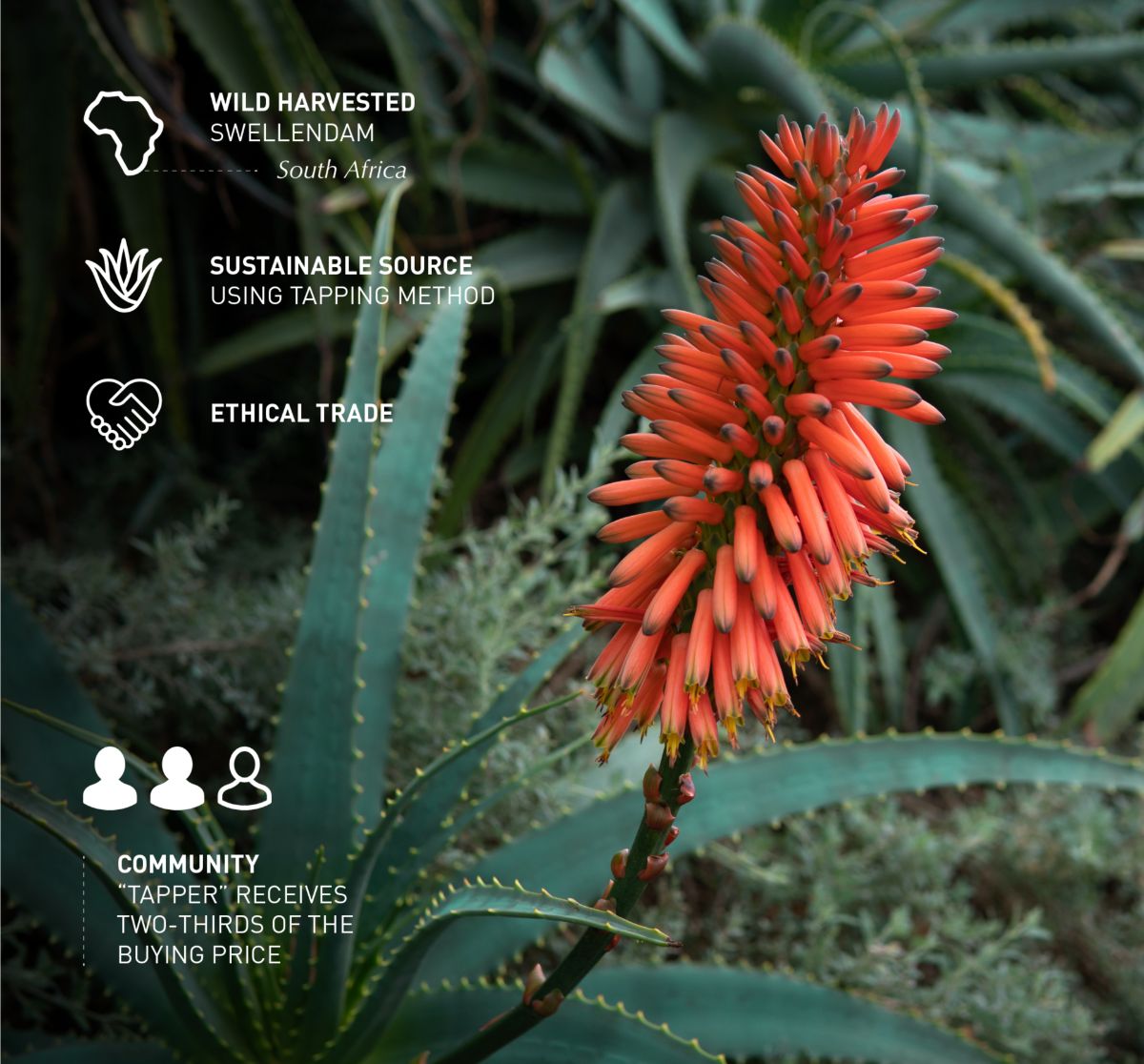
/ Aloe ferox Mill /
CAPE ALOE
Aloe Ferox contains all the goodness of Aloe Vera, with the added advantage of higher quantities of vital properties and additional elements to augment its effectiveness. One such example is Aloin. Only present in Aloe Ferox, Aloin is an antioxidant and viral stimulant that enhances skin repair and healing.
Aloe Ferox is commonly used in skincare for its anti-inflammatory properties, it also contains has antiviral and antimicrobial properties.
Aloe Ferox has been used as a medicinal product for years, most notably by indigenous tribes of Southern Africa. In the Garden Route, stretching all the way to the Eastern Cape, Aloe Ferox grows in abundance, making it a sustainable source for business.
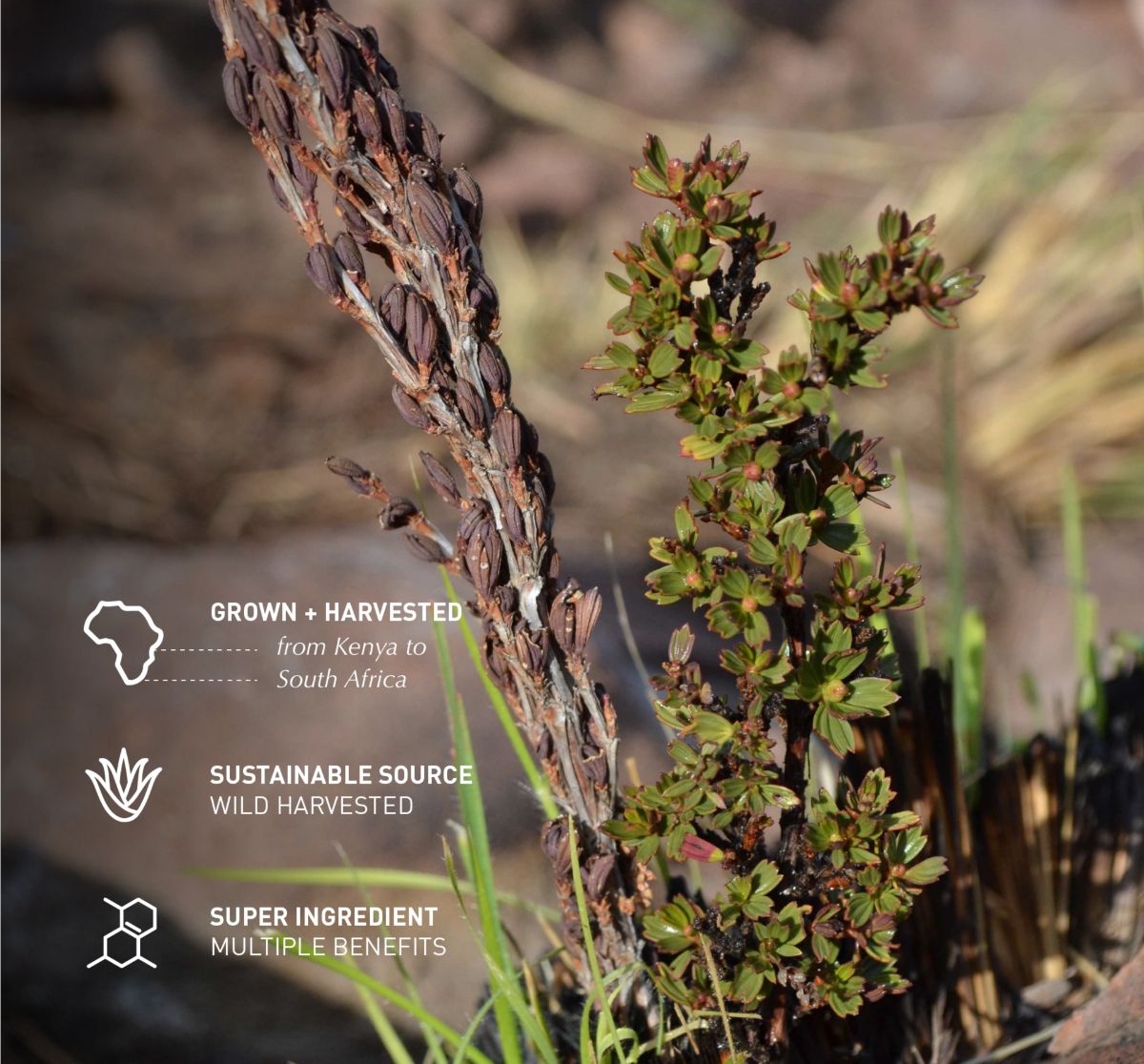
/ Myrothamnus flabellifolia /
The Resurrection Plant
Resurrection plants are a source of several compounds with antioxidant, anti-inflammatory and anti-carcinogenic properties. They produce phenolic compounds (flavonoids), terpenoids, and biflavonoids such as robustaflavone that prevent free radical damage and act as natural anti-aging skin actives.
Myravive facilitates substantial and rapid moisturisation of the skin. It also contains unique polysaccharides that nourish skin cells and contribute to its use as an anti-aging agent and for softening and smoothing the skin.
Myrothamnus flabellifolia is capable of inhabiting extremely inhospitable habitats due to its ability to exist for years in an air-dried, quiescent state. Upon the provision of water, it can resume metabolic processes within a few hours.
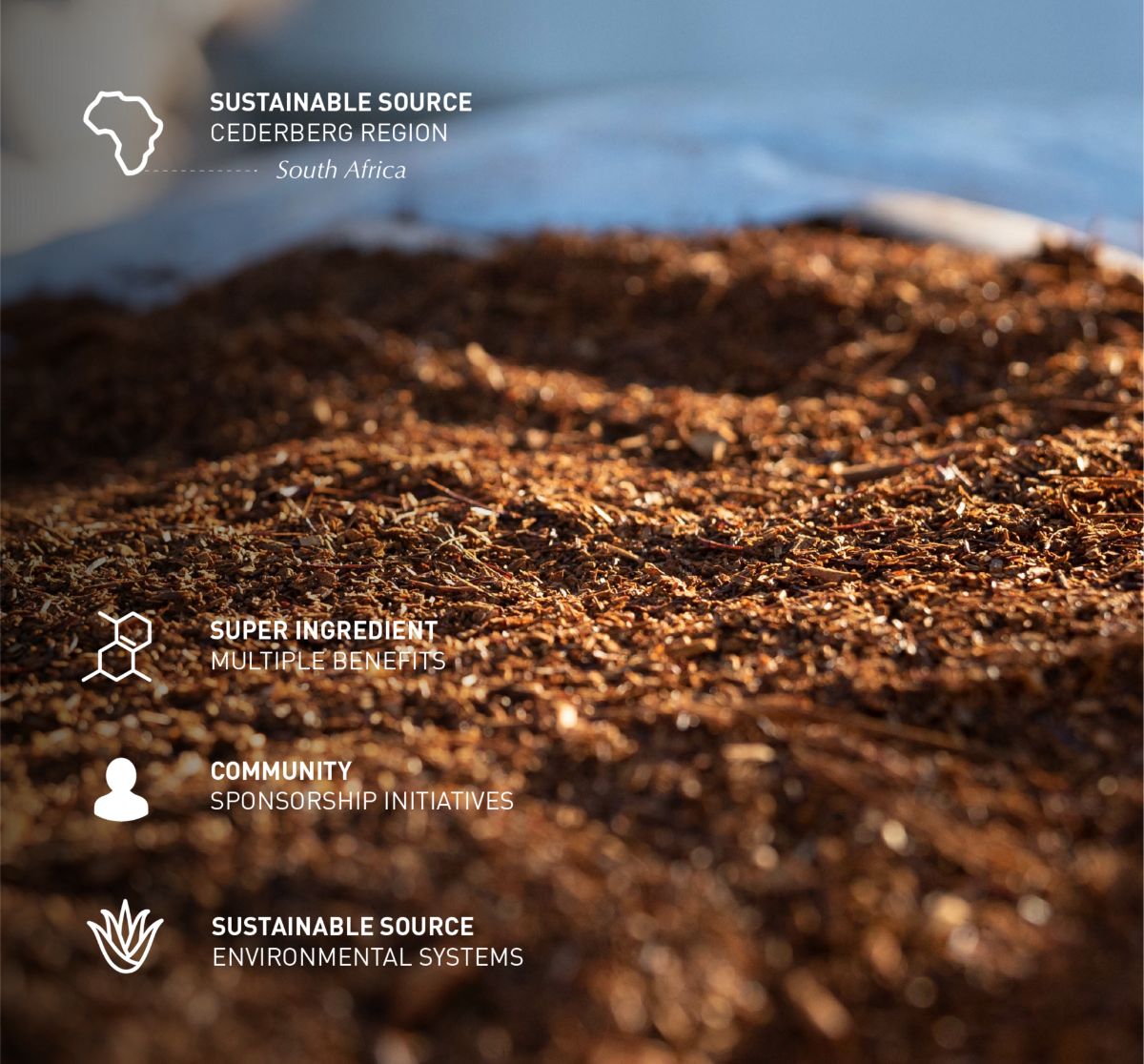
/ Aspalathus linearis /
ROOIBOS
Rooibos, with all its antioxidants, helps fight free radicals in the skin and repairs damage brought on by the elements. It also acts as an anti-ageing agent on the skin. These trusty antioxidants also help soothe irritations caused by sunburn, eczema, or dryness of the skin.
Known for centuries by the Khoi and the San, and developed later as a health tea, Rooibos (Aspalathus linearis) is proven to help fight free radical activity that leads to oxidative stress and lifestyle diseases, as well as skin ageing.
Sustainably sourced from the Cederberg Region, Western Cape.
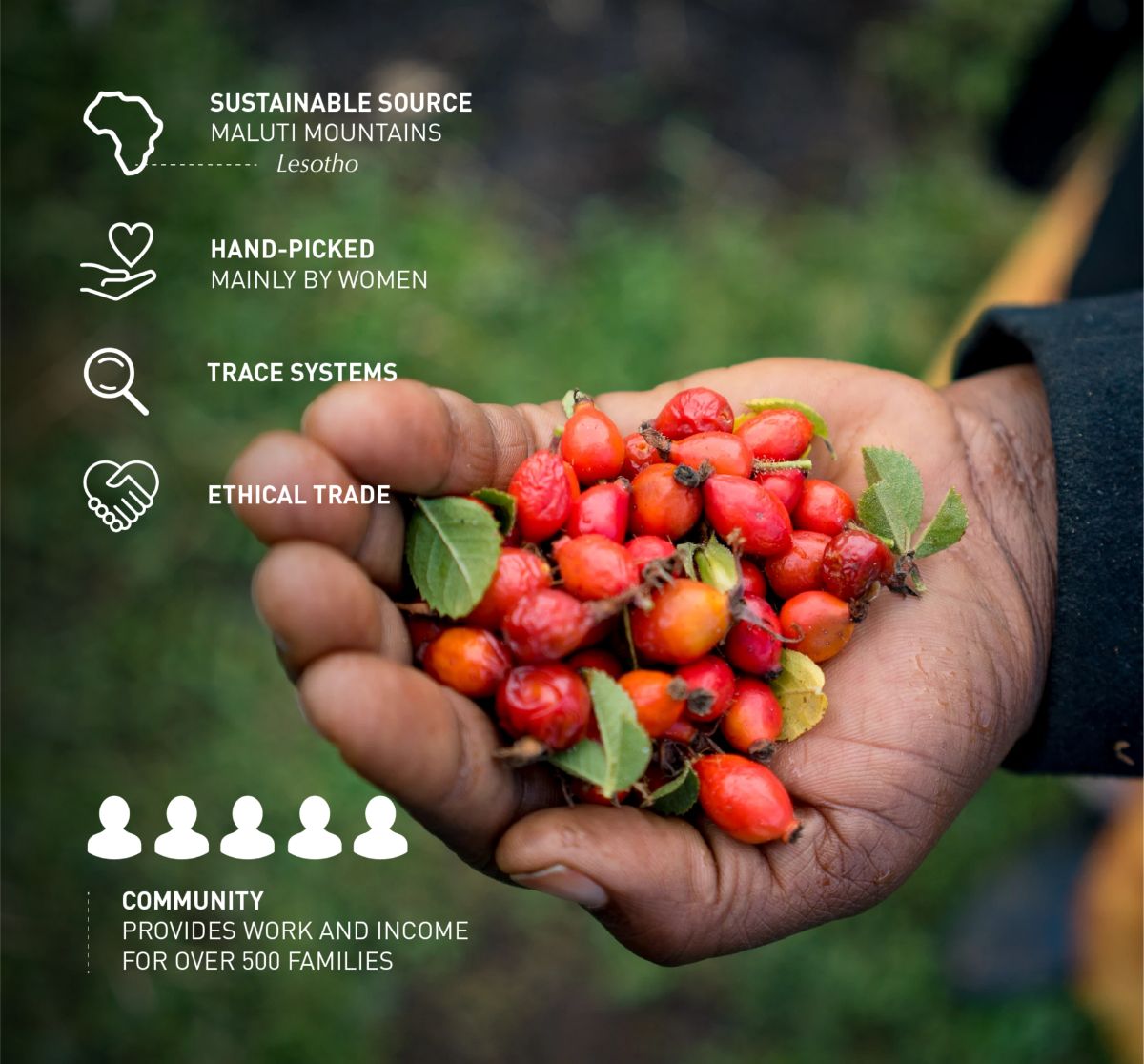
/ Rosa canina /
ROSEHIP
Natural trans-retinoic acid (Vitamin A), combined with rosehip oil’s essential fatty acids and beta-carotene (a precursor to Vitamin A), has been proven to promote healthy skin cell rejuvenation, reduce the depth of wrinkles, fade fine lines and stretch marks, rebuild sun-damaged skin, lighten age spots, improve uneven skin tone, treat acne and oily skin, and heal scarring and burns.
The Zulu people named the 300-kilometre section of mountain range bordering KwaZulu-Natal and the mountain kingdom of Lesotho ‘Ukhahlamba, meaning “Barrier of Spears”. The early Dutch settlers called the rugged peaks the ‘Drakensberge’ or “Dragon Mountains”. It is here, between dramatic mountain peaks, that the thorny creeper, rosehip, reveals tremendous healing properties. The berries, seeds and roots are hand picked, mainly by women, providing the local communities with valuable and sustainable economic opportunities.
Our oils are certified organic by Ecocert, NOP & EOS, for the production and trade of cold pressed oils.
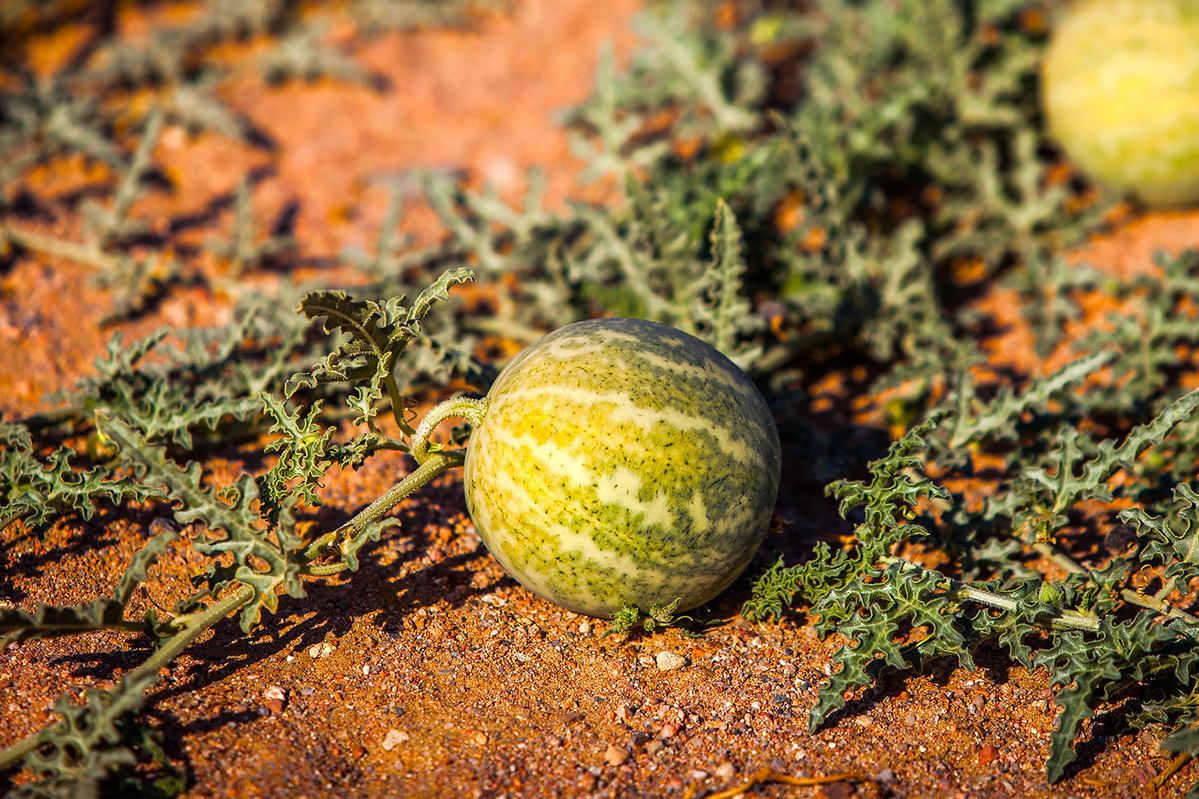
Citrullus lanatus
Kalahari Melon Seed Oil
Grown in the harsh and arid conditions of the Kalahari Desert, the Kalahari Melon is a resilient botanical, thriving where few others can. The seeds of this melon produce an oil that is a treasure trove of nutrients, rich in essential fatty acids, particularly linoleic acid, and Vitamin E. This lightweight, non-greasy oil is renowned for its ability to deeply moisturise and restore the skin’s natural barrier, making it an ideal ingredient for hydrating and rejuvenating tired, dry, or sensitive skin.
Traditionally used by indigenous communities for its healing properties, Kalahari Melon Seed Oil is now a prized component in modern skincare, bringing the resilience and vitality of the desert to your daily routine.
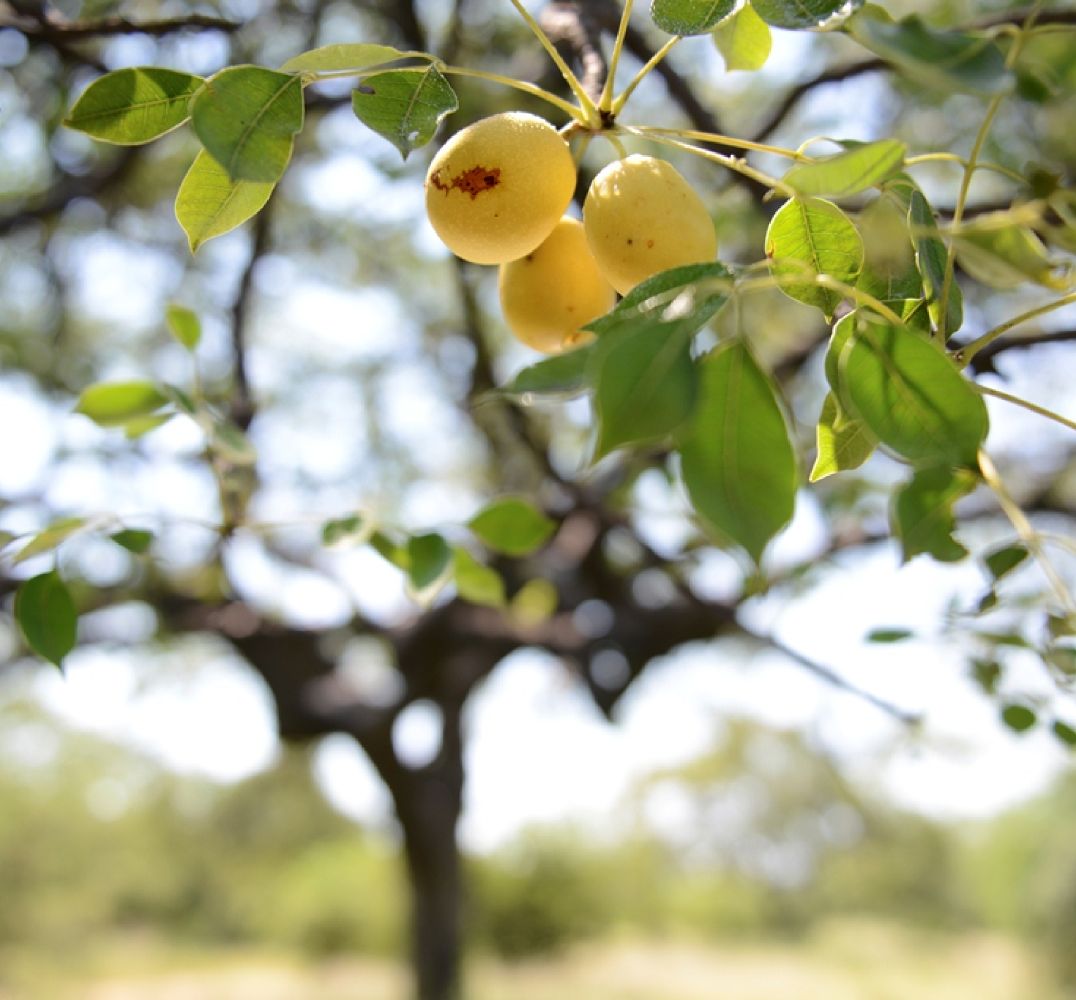
/ Sclerocarya birrea /
MARULA
The edible fruits and the multiple uses associated with almost all parts of the marula make it one of southern Africa’s most valued trees.
Rich in protein and antioxidants, marula oil is used as a moisturiser. Its fine molecular structure hydrates and protects, and absorbs into the skin easily. It can be effective for softening and smoothing fine lines and getting rid of acne.
People in southern Africa have used it for hundreds of years as a skin care product and protectant. Marula oil protects the hair and skin against the effects of the harsh sun and weather. The marula fruit is edible, eaten either fresh or made into a delicious jelly. It also makes alcoholic beer known as Mukumbi by the Vhavenda people.
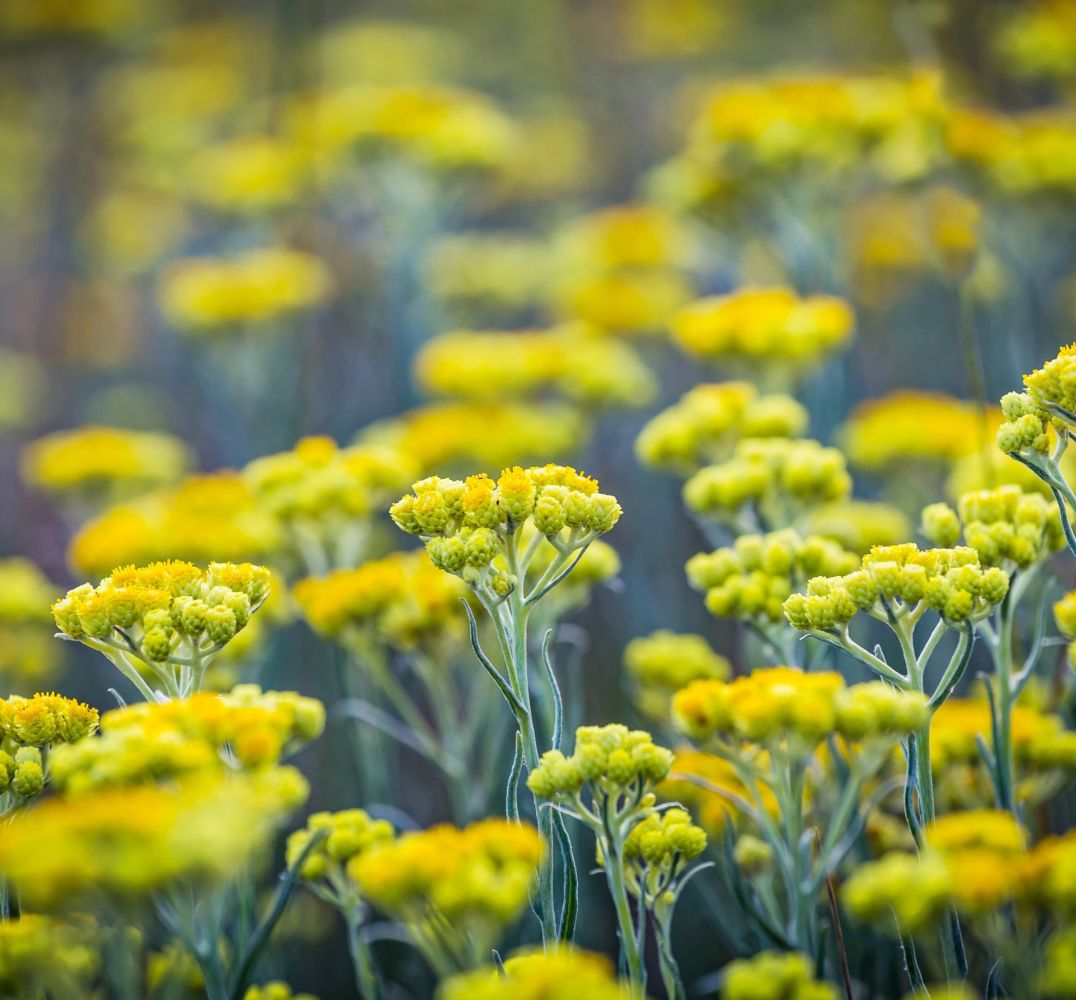
/ Helichrysum Odoratissimum /
AFRICAN IMMORTELLE
This strongly aromatic bushy perennial herb grows mainly along the coastal regions of South Africa.
African Immortelle has exceptional cell regenerating & anti-inflammatory qualities, and is well known for its skin rejuvenating properties, healing and skin repair benefits.
The Khoisan anointed their bodies with this herb for its antimicrobial benefit.
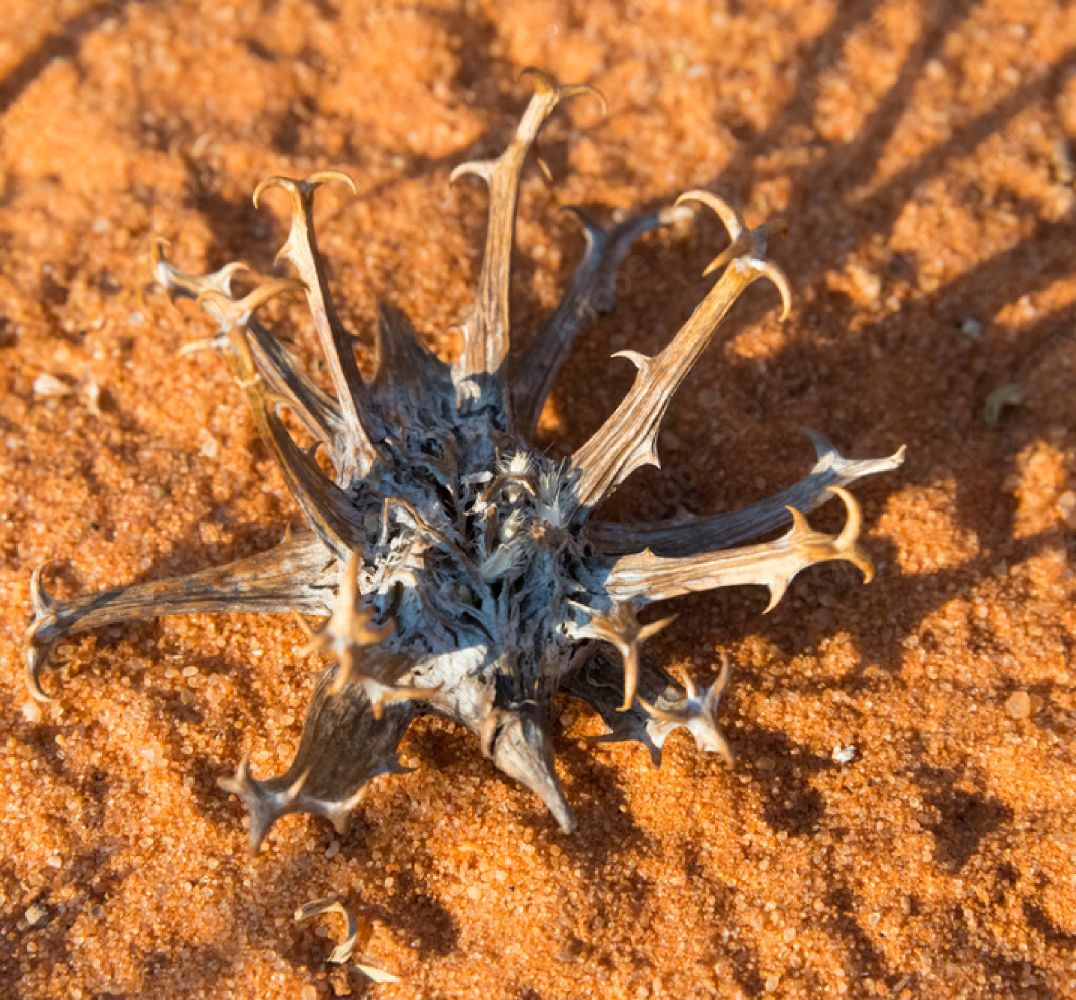
/ Harpogophytum procumbens /
DEVILS CLAW
Scientifically named Harpogophytum procumbens, Devils Claw is a genus of the sesame family and is found in arid areas in Southern Africa, particularly in South Africa, Botswana and Namibia. It is named for the appearance of its fruit, which is covered in hooks that catch onto the fur of animals. The seeds are then distributed as the animals roam.
The roots hold a compound which helps improve inflammatory responses. With the ability to ease pain it acts to relieve skin redness, inflammation and puffiness. Studies suggest that Devils Claw may also have antioxidant effects. This means the plant can ward off cell-damaging effects of free radicals that we encounter daily from the sun and pollution.
Although it is named Devils Claw because of the claw-like hooks of its fruit, it is in fact its roots that are harvested for medicinal use. A wild ancient herb from Southern Africa, also known as grapple plant or wood spider, it is a plant that has been used by traditional healers for millennia. The Khoisan have traditionally used the root to produce topical ointment for the treatment of boils, wounds and burn healing for generations.
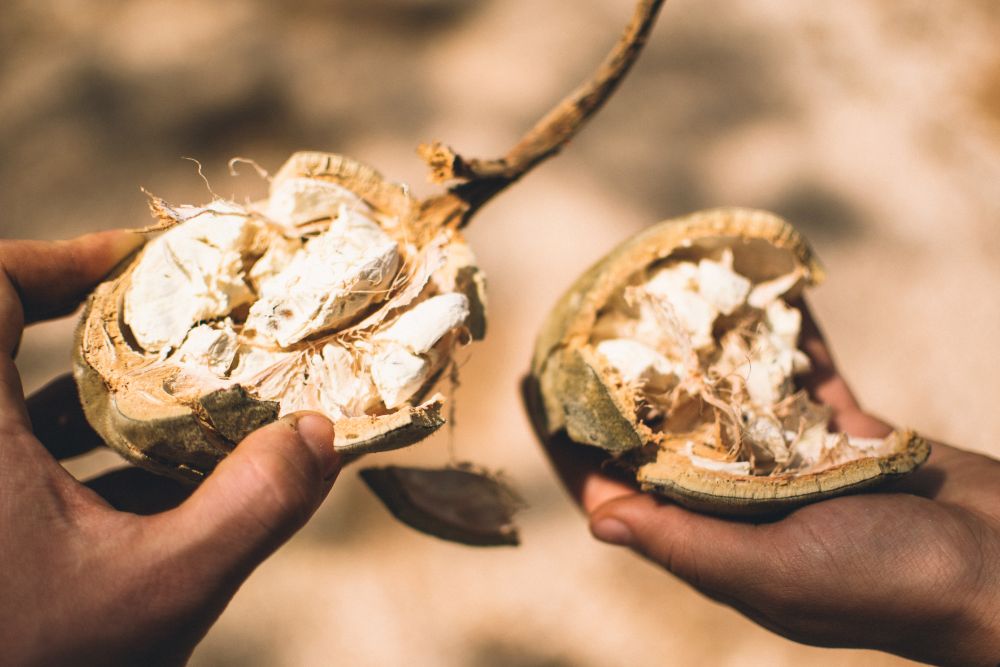
/ Adansonia digitata /
BAOBAB
Regarded as the largest succulent plant in the world, the baobab tree is steeped in a wealth of mystique, legend and superstition wherever it occurs in Africa. It is a tree that can provide food, water, shelter and relief from sickness.
High in linoleic acid, a kind of omega-3 fatty acid that has anti-inflammatory properties, Baobab helps with acne, reduces irritation, redness and swelling and has moisturising properties. It also contains Vitamins B, C, and Omega 3s that, when used for the face, can help with dry, ageing and dull skin. Fatty acid omegas maintain skin barrier and fight free radicals and, along with Vitamin C, promote collagen production for more youthful looking skin and higher skin elasticity.
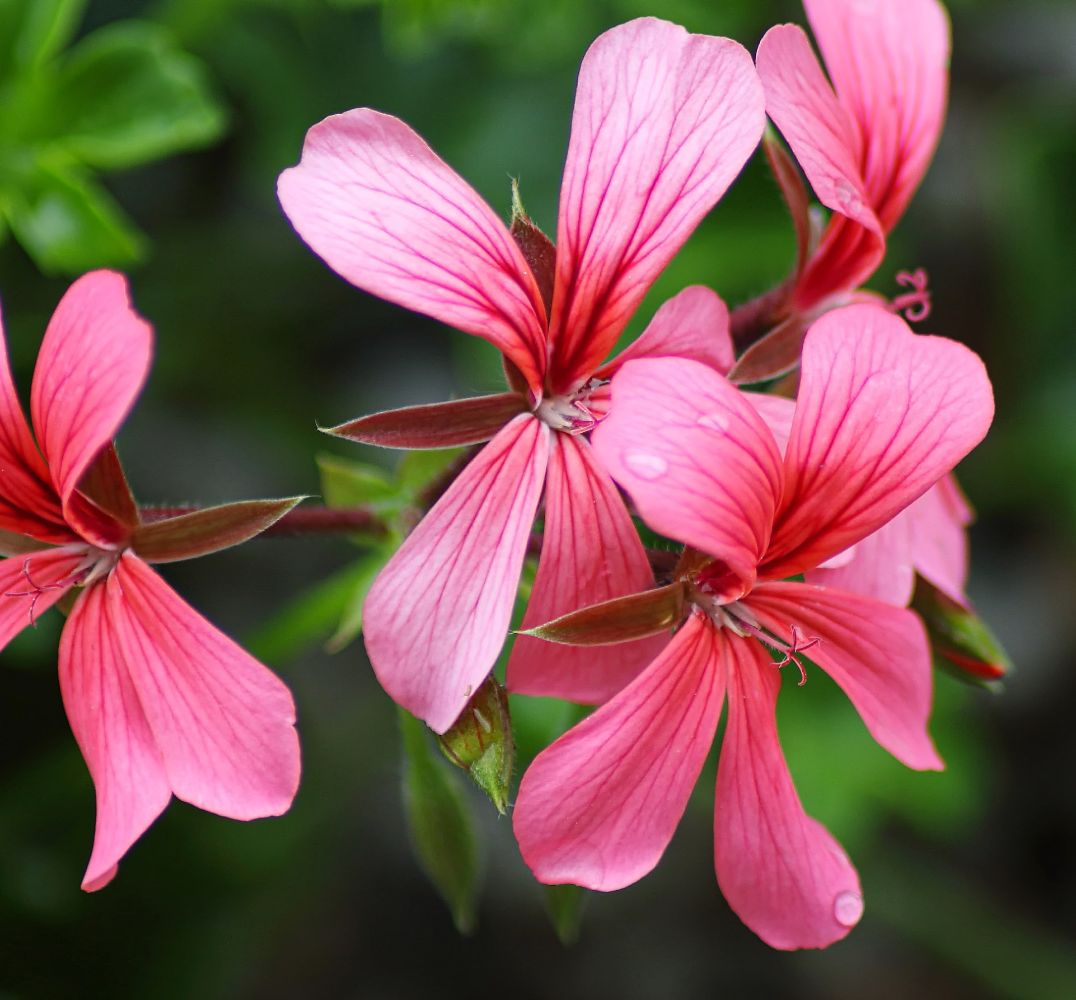
/ Pelargonium graveolens /
ROSE GERANIUM
Native to the Cape Provinces and the Northern Provinces of South Africa, Zimbabwe and Mozambique. It is cultivated on a large scale and its foliage is distilled for its scent.
Inalool is an anti-inflammatory that calms the skin. Gernayl formate makes it anti-fungal. Citronellos is an antioxidant, anti-fungal, anti-viral and anti-microbial. Cytophylactic promotes regeneration of skin by recycling dead skills and regenerating new cells.
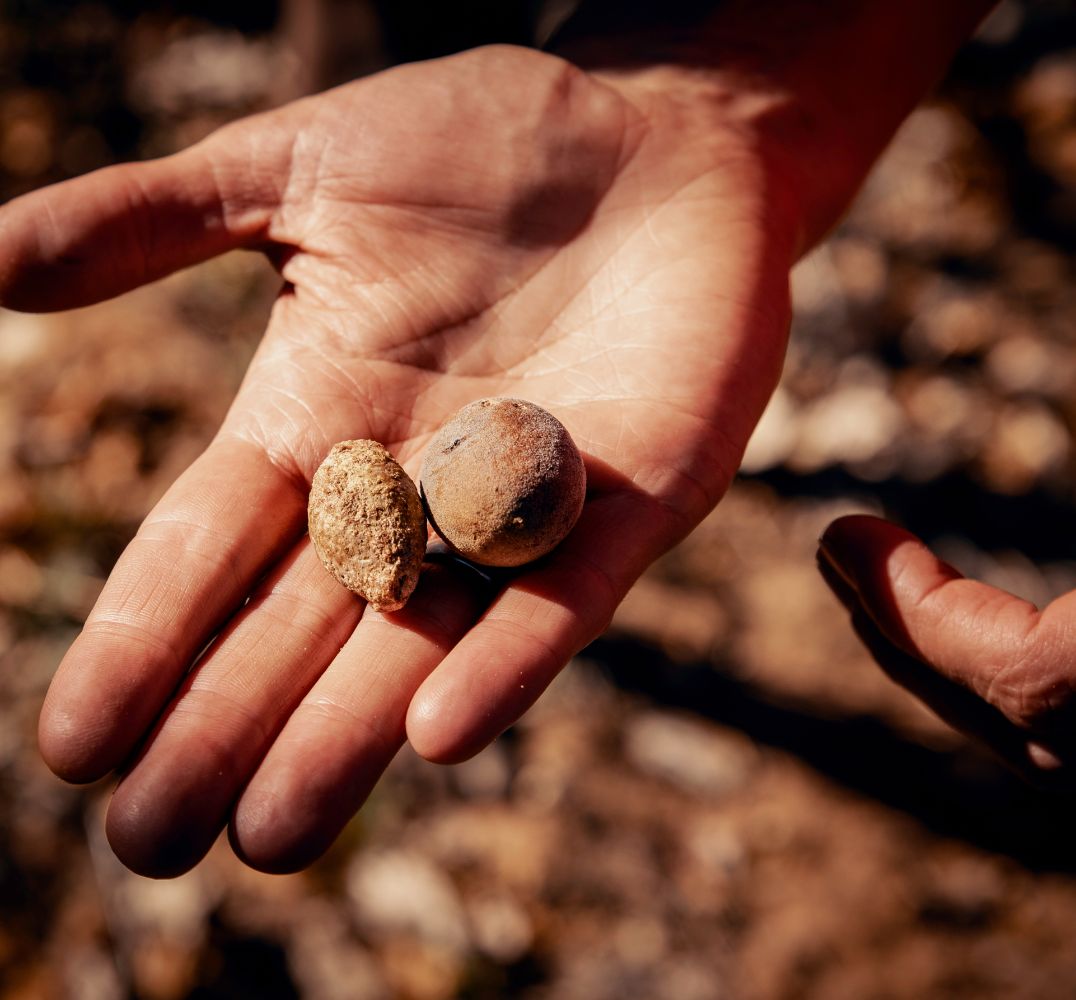
/ Schinziophyton rautanenii /
MONGONGO
Mongongo contains high poly-unsaturated fat, which has skin softening properties. Additional fatty acids make it an emollient that maintains and locks in moisture. Eleostearic acid that polymerizes when exposed to UV rays can help protect the skin against harmful rays. High content of Linoleic acid, Alpha Linolenic acid and Oleic acid, vitamins and minerals like Vitamin E, copper, zinc, and calcium, improves skin hydration and makes it a good anti-aging ingredient.
Mongongo oil is used as a rub by the !Kung bushmen for their skin. The oil protects, moisturises and cleanses the skin against the harsh Kalahari Desert. The !Kung also eat the Mongongo fruit as their primary food. Mongongo nuts are a staple diet in some areas, most notably among the San people of northern Botswana and Namibia. Archaeological evidence has shown that they have been consumed by the San communities for centuries.
Found in arid regions of sub-Sahara Africa, sustainably sourced from community cooperatives.
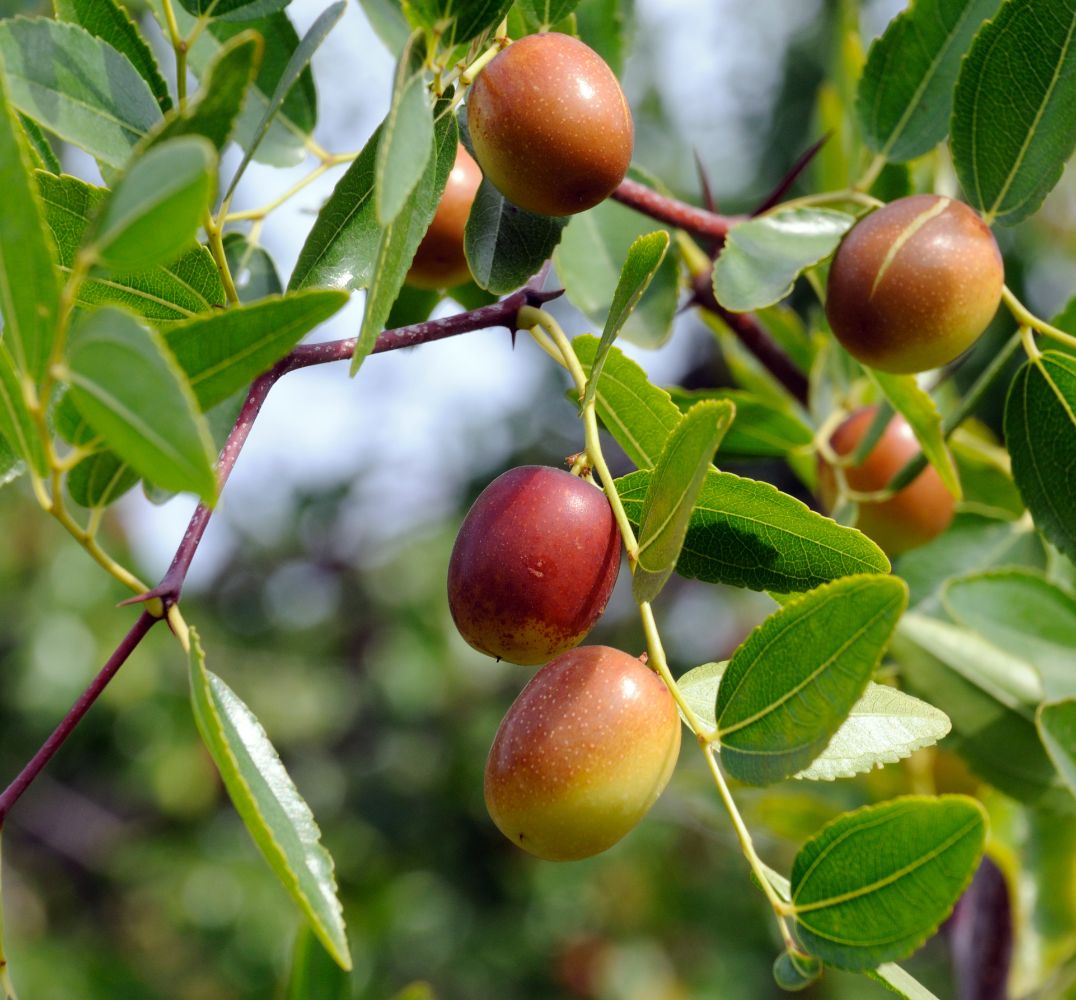
/ Simmondsia chinensis /
JOJOBA
Similar to other skincare oils, jojoba oil is packed with vitamins, antioxidants, and has anti-inflammatory properties, but what sets it apart from the others is that it’s technically not an oil, but a wax ester.
Jojoba is loaded with antioxidants, such as vitamins A and E, and omega-6 fatty acids, which are essential components of the skin’s barrier. It also acts as a humectant, meaning it works to retain moisture in the skin. It also has a variety of healing properties that may make it effective in treating skin conditions like acne, eczema, and psoriasis.
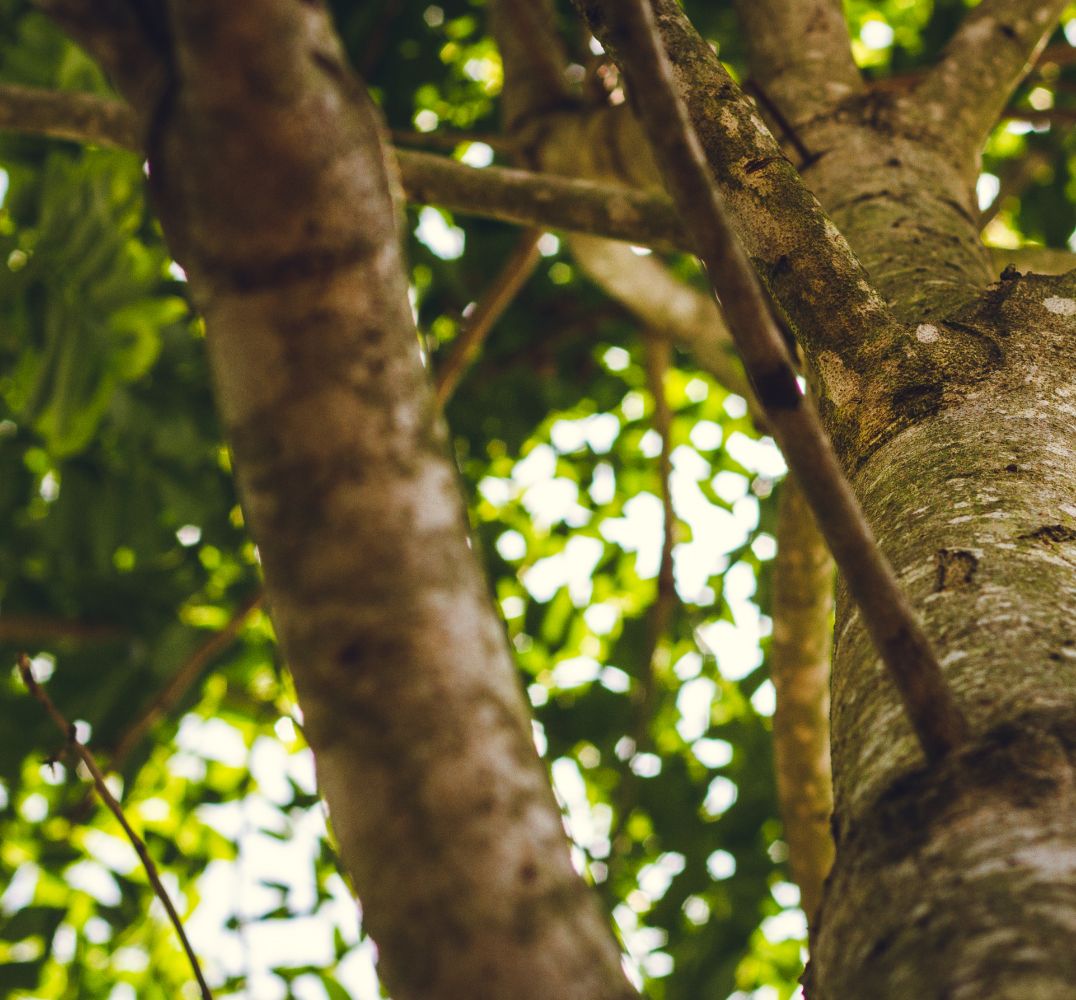
/ Khaya senegalensis /
AFRICAN MAHOGANY
The timber of the Khaya tree is called African Mahogany.
African Mahogany stimulates Collagen XVIII which is the only collagen present in all layers of the skin. It is a bio-active collagen that improves elasticity and decreases the appearance of wrinkles and irregularities. Additionally, African Mahogany rejuvenates the pores leading to smoother skin.
Its medicinal uses are as a tonic and fever medicine; a chewing stick for treating toothaches, dental caries, and septic mouth; and for treating diarrhea, dysentery, and malaria. In most parts of West Africa, the bark is used against fever and malaria; hence, it has been described as African quinine.

